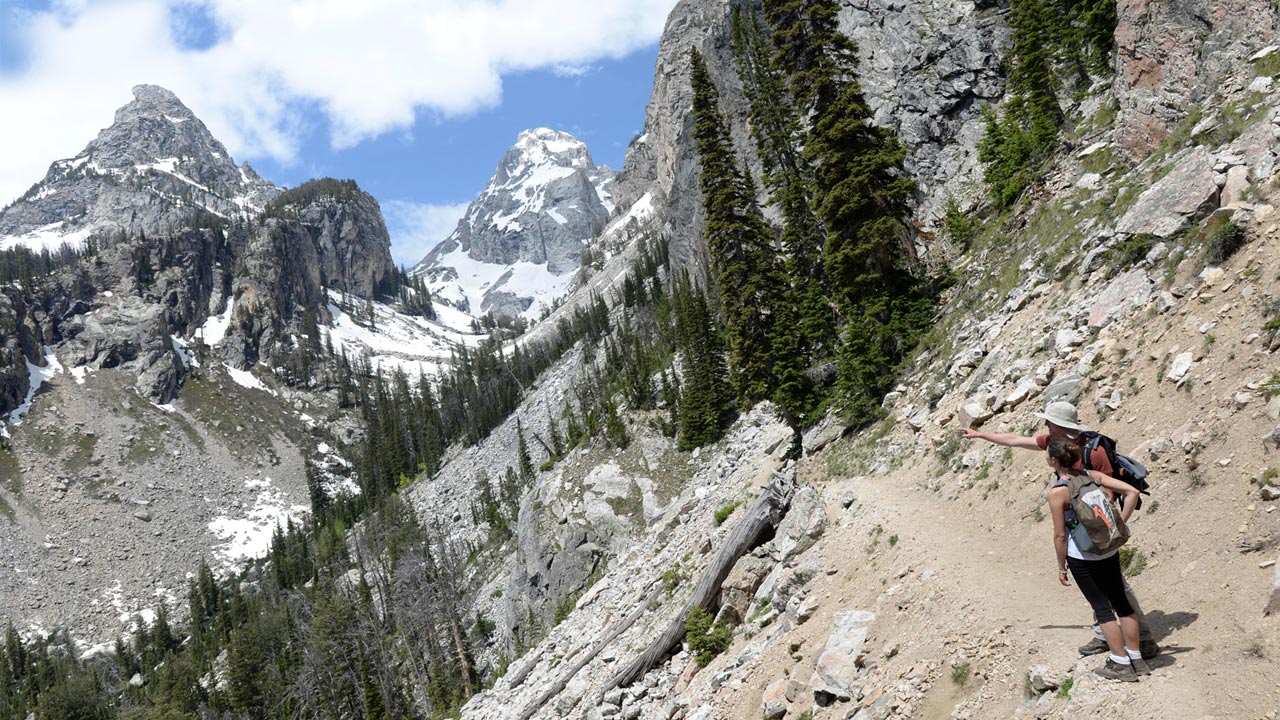On Top of the World

Students in University's first field geology course reach new heights out West
Grand Teton Photography by Bradly J. Boner;
NJSOC Photography by Mike Peters
While eating a peanut butter and jelly sandwich on a mountaintop in Wyoming, 11,000 feet above sea level and overlooking snow-capped mountains, I feel as if this is a day by which all others will be measured – it can’t get much better than this. But then it does …
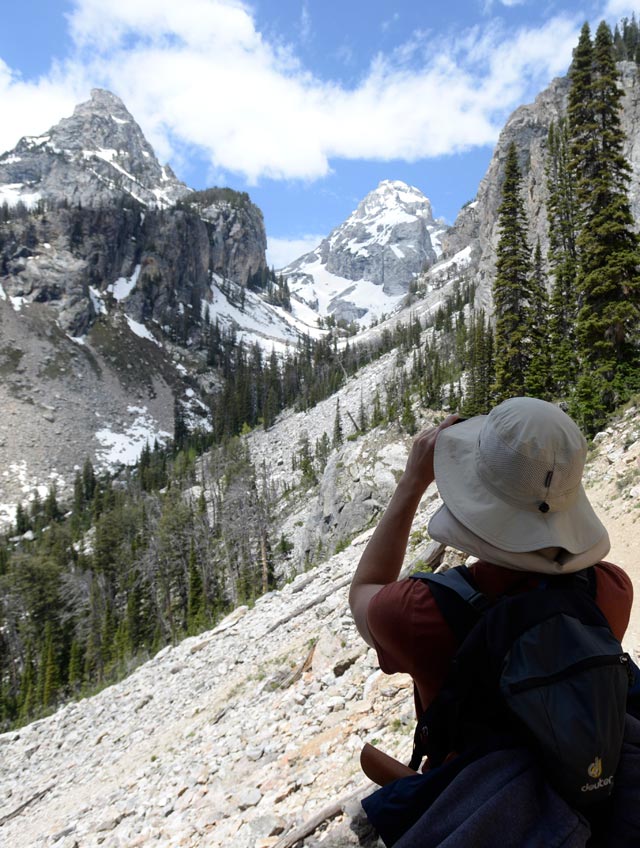
“It's a mental challenge to go up this mountain, not just physical.”
– Mariany Segura
Each day at the Montclair State geology field camps in Wyoming and Montana brings its own amazing views, experiences, challenges and lessons none of us will soon forget.
“The whole time out here I just keep thinking this is an experience of a lifetime,” says senior Erik Strandskov. “Field camp is an awesome educational adventure that takes a bunch of people who only kind of know each other from class and turns them into a makeshift family. It gives us a window into the country away from our more urban lives.”
In the past, geology majors at Montclair State did their field camp and course studies through other universities. But this past summer, Matthew Gorring, associate professor in the Department of Earth and Environmental Studies, launched the University’s first field geology course. Our inaugural class spent two weeks at the University’s New Jersey School of Conservation (NJSOC) in Stokes State Forest and almost a month in Wyoming and Montana, including several days in the Yellowstone and Grand Teton national parks.
“The environment out West is perfect for field geology in the summer. The scenery is spectacular, the weather is perfect and we can lead students through field projects that start out simple and become more complex as we go along,” Gorring tells me later. “It’s definitely a life experience. The physical and mental aspects to this course can be difficult but all of the students did an excellent job handling both.”
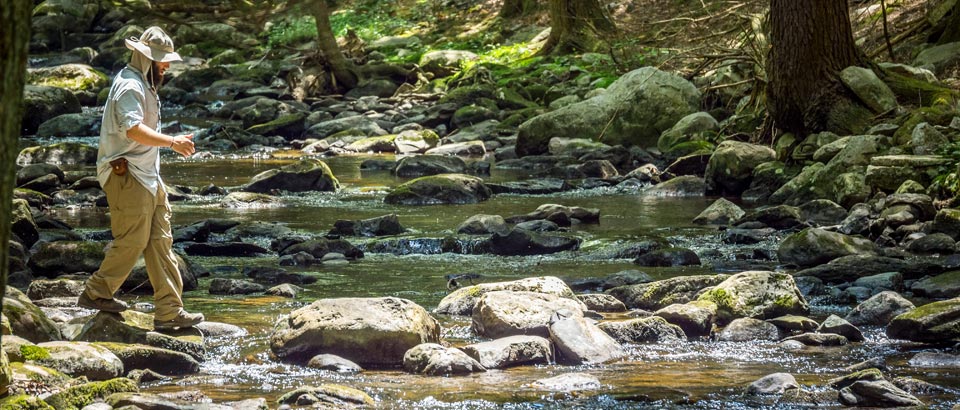
Chris Canning crosses a creek at NJSOC
Getting warmed up
The shopping list for field camp attached to the course syllabus is telling: pencil, compass, hiking boots and a snakebite kit. For the next six weeks, we’ll apply everything we’ve learned in our studies so far (and try to avoid snakes). Like other capstone geology courses in the country, we study geologic formations, piece together their history, take measurements and create geologic maps. “Once you do your field camp, you can call yourself a geologist,” one experienced graduate student tells our group before we embark.
The work at NJSOC is a warm-up for the work out West. We wake up with the sunrise and spend each morning and afternoon in and by a stream in the woods, writing notes on the geology and taking measurements. Our Earth and Environmental Studies professors — Gorring, Tanya Blacic, Josh Galster, Greg Pope and teaching assistant Dave Sharpe — teach us to use field equipment such as ground-penetrating radar, a seismograph and a GPS total station. In the evenings, we attend lectures and compile the day’s work.
At NJSOC, home is a cabin with a lakefront view. Evening dessert is s’mores by a bonfire. There are no lights at night other than flashlights, allowing a view of the night sky filled with stars. We can’t stop talking about how lucky we are to be here. But even more exciting is the thought of flying West.
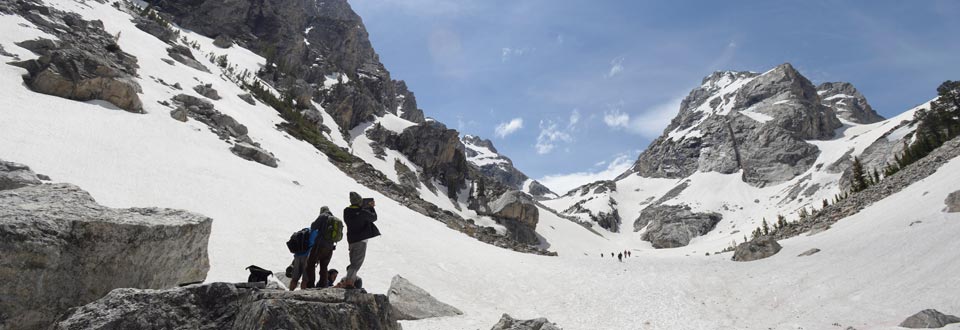
Students pause their ascent to take a photo of the grand landscape before them.
Heading West
When the plane lands in Billings, Montana, we pile into vans and make our way to Powell, Wyoming, and our base at Northwest College. Each day, we drive to our first two mapping sites, Elk Basin and Sheep Mountain, covering new ground, crossing ridges and valleys, deserts and steep canyons. Some days our calves hurt, there is no shade to take cover under and we look up at a ridge, peaking 1,000 feet above us, and wonder whether we can make it.
But the promise of another breathtaking view at the top gives us the energy to push forward. The first to reach the top lets out a roar that echoes loud and clear. Victory! Cheering and applause greet the others as they reach the summit. “It’s a mental challenge to go up this mountain, not just physical,” says 2014 graduate Mariany Segura, stopping for a water break. By the end of the day she says she’s hooked and all she wants is to “keep climbing more mountains.”
Mountains span the horizon in every direction. “When you first get here, you feel like an ant among all of these mountains,” Gorring says. “But then
you walk around, and you really get to know them.”
After a few days at each site, all of us are familiar enough with the area to understand what is underfoot, to put rock formations in historical order, describe how the formations were made and place them accurately on a map. Making stratigraphic columns and writing about the geologic background of the area provide a full picture of the land traversed.
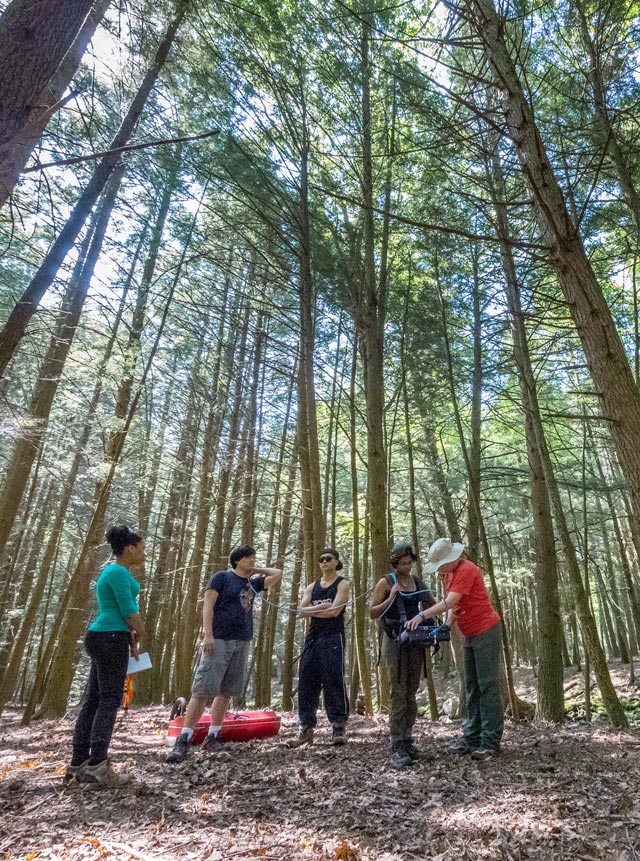
“Once you do your field camp, you can call yourself a geologist.”
– A graduate student
The following week, we hit the road again, stopping at Red Lodge, Montana, where the elevation is high enough to see snow-capped peaks. Driving through Yellowstone National Park, the view includes hundreds of bison grazing in the fields. For several nights, the class sets up camp in Grand Teton National Park, where we hike in through the snow to a glacial valley and swim in crystal clear Jackson Lake, surrounded by steep mountains. In Yellowstone, we witness Old Faithful erupting and see the surreal spectrum of colors of Grand Prismatic Spring.
“A lot of people haven’t had the chance to see something like this,” says senior Chris Canning, explaining that he now has a better sense of the country. “It’s a real eye-opener.”
While in Dillon, Montana, our class is based at the University of Montana Western, where we work on the final mapping project: Block Mountain. We feel the technical, mental and physical training of the past six weeks. Topographic maps are our sidekicks, not just pages of squiggly lines. Field books are now nearly filled with our own notes and observations. Taking measurements has become muscle memory. We know we can walk distances that once seemed impossible, and when we cross an area, we understand the geologic structures around us. By the end of the field course, we no longer feel like ants roaming a strange world, we hike to confirm a hypothesis.
“Field camp helped me to grow not only educationally,” says Canning, “but as a person.”
Preparing for the flight home is bittersweet. It is hard to leave such a beautiful part of the country and we make promises to return soon. But new adventures await back home.
Some students are graduating and starting work or graduate school. Others will continue to work on research projects. Now, with the experience of field camp behind us, we are proud and confident enough to call ourselves geologists.
Writer Masha Guzner is a senior geoscience major and member of the inaugural field geology course.
- 060314_6713_Field-Geology-Class
- 060314_6716_Field-Geology-Class
- 060314_6751_Field-Geology-Class
- 060314_7055_Field-Geology-Class
- 060314_7153_Field-Geology-Class
- 060314_7507_Field-Geology-Class
- 062514_0013_Field-Geology-Grand-Teton-NP
- 062514_0022_Field-Geology-Grand-Teton-NP
- 062514_0026_Field-Geology-Grand-Teton-NP
- 062514_0033_Field-Geology-Grand-Teton-NP
- 062514_0042_Field-Geology-Grand-Teton-NP
- 062514_0055_Field-Geology-Grand-Teton-NP
- 062514_0059_Field-Geology-Grand-Teton-NP
- 062514_0084_Field-Geology-Grand-Teton-NP
- 062514_0088_Field-Geology-Grand-Teton-NP
- 062514_0098_Field-Geology-Grand-Teton-NP
